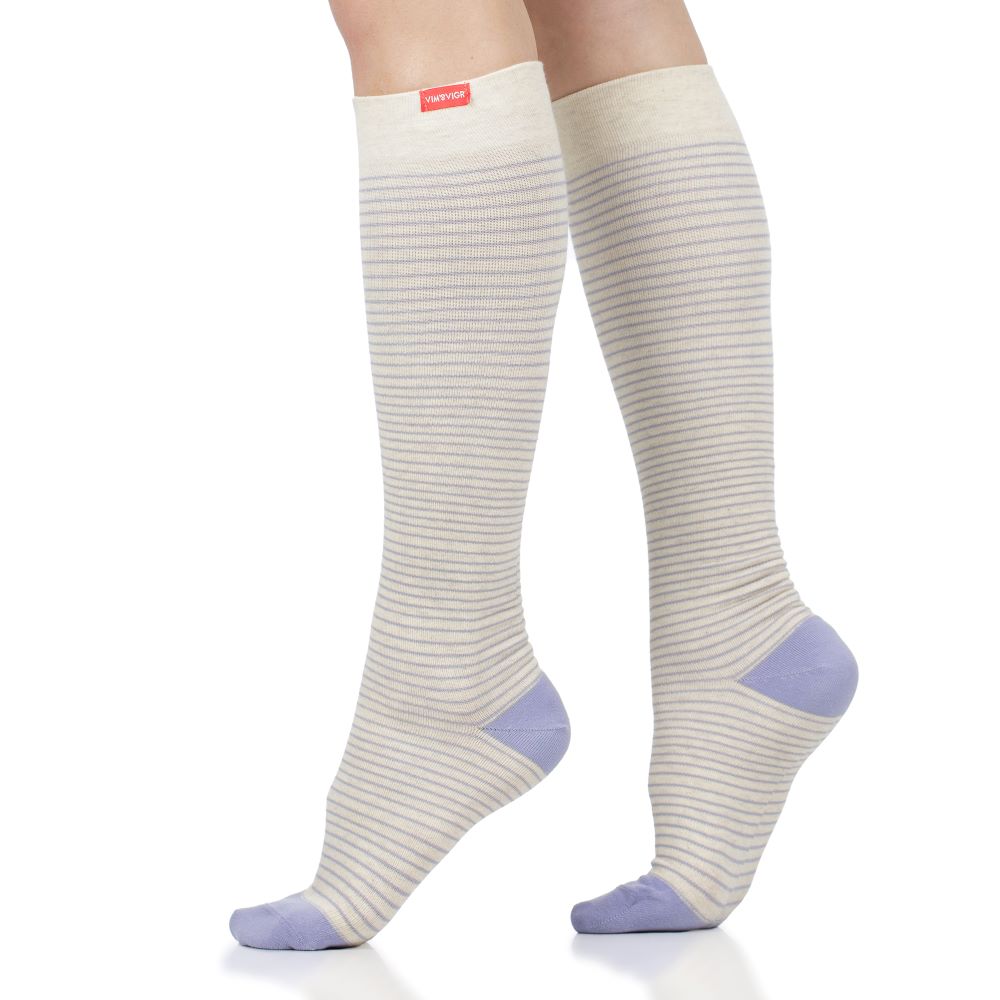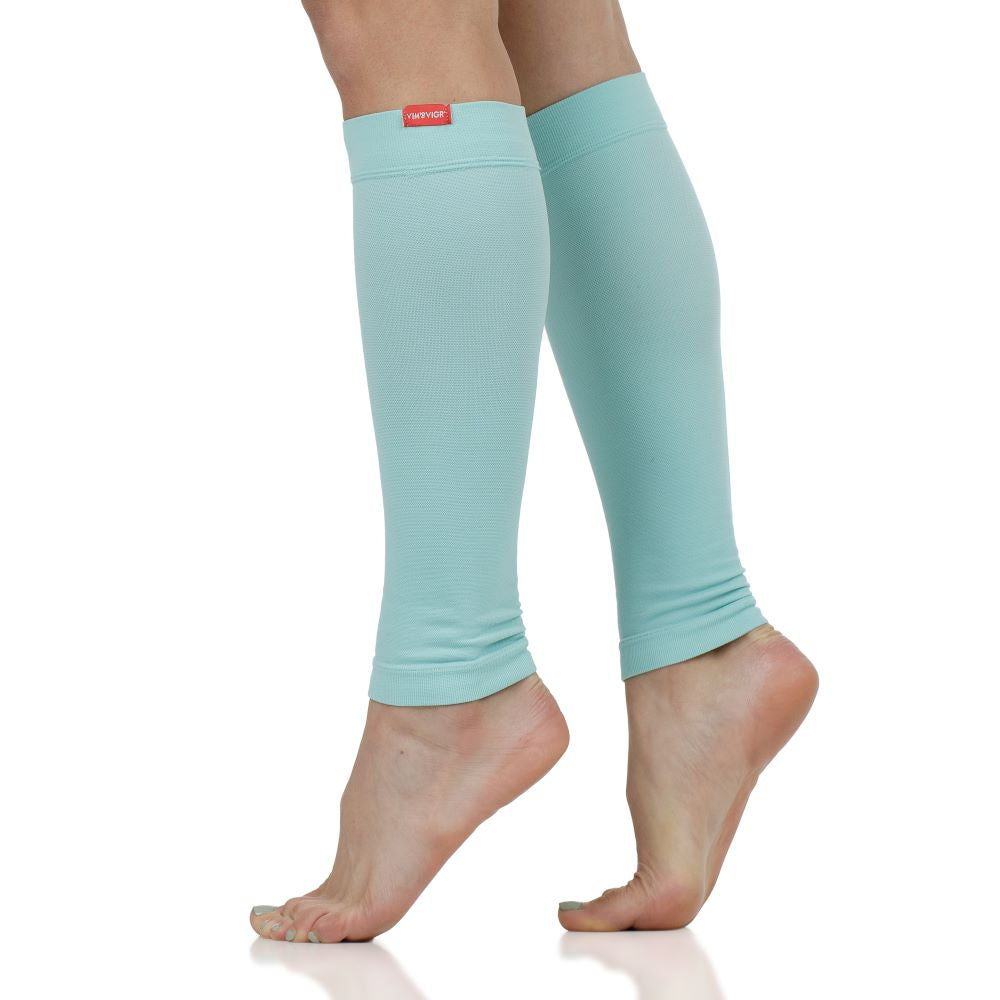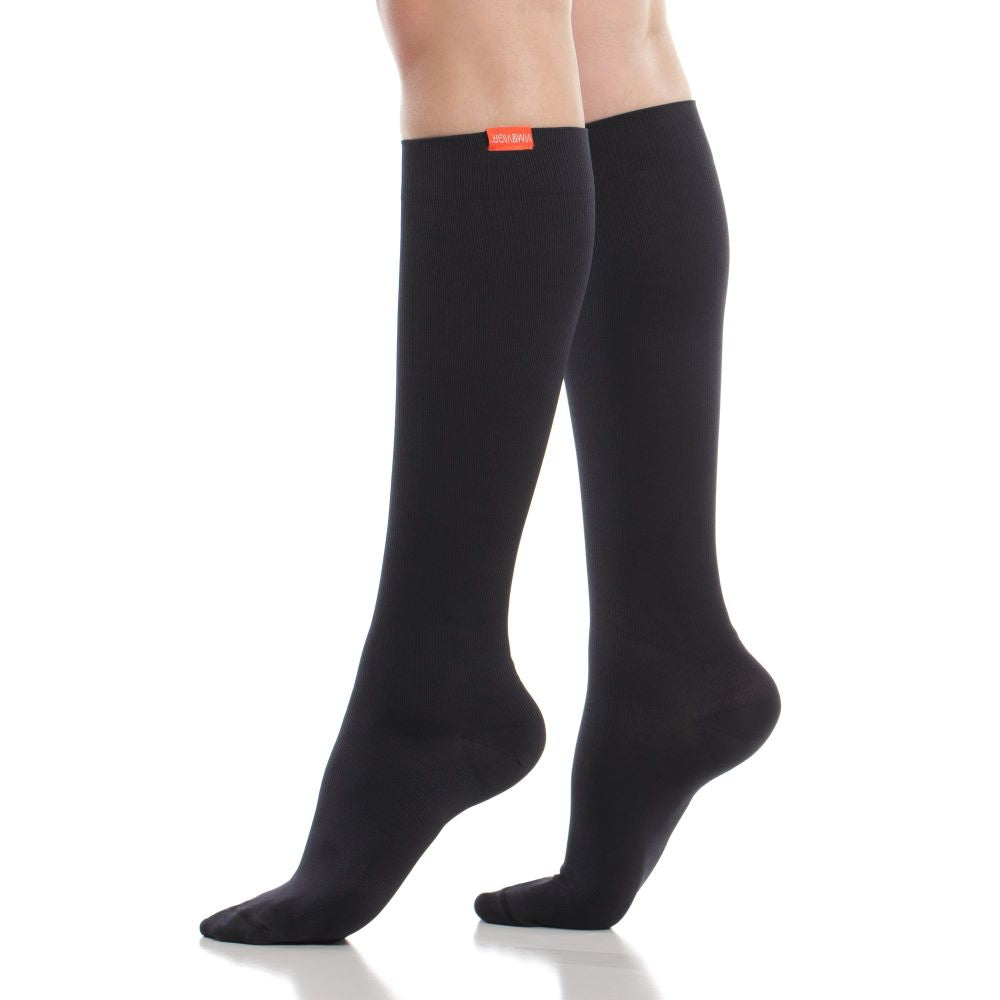Merino Wool Versus Wool: How Are They Different?
If you’ve ever suffered from cold feet in winter, or researched how to choose socks that let your feet breathe in the summer, while not retaining water if you step into a puddle, you’ll have come across the wool vs Merino wool debate. Both are – you guessed it! – types of wool, and they both come from sheep. So, what’s the big difference and when should you choose either of them?
Merino wool doesn’t just differ from “regular” lambswool in that it’s more breathable and much better at wicking away moisture. There are many ways in which these two types of wool can be compared, and pros and cons on each side.
In this article, we’ll cover the main differences and we’ll compare wool vs Merino wool, to help you make the right choice of garments when it matters. And, in the end, we’ll tell you which type of wool is better for compression socks, too.
What is the main difference between wool and Merino wool?
The key difference between these two types of fabric is in how the Merino wool feels and behaves, in comparison to regular wool. The former is softer and gentler on the skin thanks to being made up of thinner fibers that are more flexible and less likely to fray. It’s the fraying that causes that itchiness we all associate with regular lambswool.
Crucially, there is only one “source” of Merino wool – the Merino sheep. This breed started in Spain and has now become extremely popular around the world.
You will most often see Merino wool used in garments that are worn close to the body, e.g. socks or base layers, thanks to the material’s ability to keep you warm and dry in any weather conditions. The high level of breathability and moisture wicking properties of Merino wool make it very popular for sports clothing, too.

Comparing Merino wool versus wool
Looking at the key advantages of each material and comparing wool versus Merino wool, we can split their characteristics in 8 broad categories.
Thermoregulation
The main reason we turn to Merino wool is its ability to keep the body warm, especially when compared to its weight. Lambswool can be cumbersome and heavy, but a Merino wool shirt or pair of socks will keep you just as warm without the extra bulkiness.
Arguably, Merino wool is just as great in summer, thanks to its ability to let air flow through the material, wicking away sweat and letting the body breathe and cool down efficiently. This is why you can find hikers, mountain bikers and runners turning to Merino wool socks for their workouts in any season.
Breathability
Merino wool has a great ability to remove water from the skin, thereby removing any barriers to the flow of air. This makes it highly breathable and ideal for wearing in all temperatures. By contrast, regular wool is not as effective at absorbing moisture and letting air flow freely, so it is more likely to make you sweat when you get warm.
Layerability
Because Merino wool garments are effective while being very thin and lightweight, they are excellent base layers you can wear directly on the skin. In cold weather, you can then layer up without feeling too uncomfortable or stuffy (especially thanks to how breathable Merino is!).
Traditional wool is much bulkier and therefore not so easy to layer. Moreover, its fibers are coarser and less comfortable against the skin, causing rashes and itches. However, you could have a traditional wool sweater over Merino wool base layers. Lambswool is also good as a top layer – think scarves, hats and gloves.
Moisture retention
Merino wool is capable of retaining high volumes of moisture relative to its weight (up to 30%). It does this without becoming heavy and uncomfortable. The moisture then moves through the fabric and evaporates, keeping you dry and warm.
In contrast, traditional wool becomes heavier as its fibers keep moisture in, without the same quick transfer into vapors. This means you’re more likely to feel wet and cold.
Odor resistance
For the same reasons that Merino wool is moisture wicking and breathable, it is also great against developing unpleasant odors (e.g. from sweating). Because it keeps the body cool and dry, it doesn’t allow bacteria to develop and flourish – and they’re the origin of unpleasant smells when we sweat.
In theory, all wool has some antimicrobial properties and prevents the buildup of mildew and bacteria. The difference is that Merino wool is simply more effective in this case than regular wool.
Comfort
Because Merino wool fibers are softer and finer than those of traditional lambswool, garments made from this material are extremely comfortable and soft. This is why Merino wool is used to make base layers that can be worn directly on the skin. In winter, a Merino wool long-sleeve top and a pair of leggings, paired with some warm compression socks, will make an unbeatable combination for staying toasty and feeling comfortable.
Unlike traditional lambswool, Merino wool is not itchy and doesn’t cause allergies or eczema. It’s a great fabric for wearing next to the skin if you suffer from any skin conditions.
Care
In most cases, Merino wool garments can be machine-washed and tumble dried, but be careful to read the instruction for your piece of clothing first. Since it dries quickly, Merino wool is quite easy to care for.
Wool, on the other hand, is more sensitive and often needs to be washed by hand or on a specific gentle cycle. Generally, wool of all types keeps clean naturally and is innately antibacterial, so you may not need to wash your wool clothing too often and definitely not with strong detergents. However, traditional wool can shrink, so it needs to be washed with extra care and in cold water.
Cost
Overall, lambswool can be more expensive than Merino wool. This is a function of the supply. While Merino wool comes from sheep bred specifically for shearing, you can only get pure lambswool from the first shearing of other types of sheep (ideally, at 7 months after the onset of their first coat). So, the traditional wool production is more restricted and therefore can lead to higher costs.
At the same time, the comparison does not always hold true if you search for Merino wool sports items. In the case of technical ski socks or running base layers, prices can be considered above average for the market. However, keep in mind that some of these items may have additional technical specs that allow the brands retailing them to hike up prices.
In terms of value for money, however, both types of wool are durable and strong. Garments made from traditional wool or from Merino wool will last a long time and are less likely to be retuned or discarded. However, since Merino wool base layers tend to be quite thin, they can get worn through quickly if not cared for properly. Merino wool socks last a lot longer thanks to the high-density knitting.

When to choose traditional wool
If you’re still unclear as to which type of fabric works best, here’s a quick primer on when we’d recommend you buy a traditional wool piece of clothing.
Lambswool can be quite inconsistent in terms of quality and softness, since it can come from a wider range of sheep than Merino wool. However, one thing is certain: it’s a heavier, coarser fabric, made of fibers that can become itchy and uncomfortable in direct contact with the skin. But, as it’s warmer than Merino wool and can be worn thicker, it makes great gloves, scarves and hats for winter.
Normal wool is definitely not a good choice for any summer garment, as it’s not breathable and will not wick moisture away, like Merino wool does.
When to choose Merino wool
What about choosing Merino wool? Firstly, if you’re looking for moisture wicking and breathable fabric, then this will be the fabric to go for. Merino wool clothing is great for outdoor sports, like hiking and running, because it keeps you dry and warm and even regulates body temperature in the summer. This makes it an all-year-round material, saving you money and making your clothing more versatile.
You should choose Merino wool if you need softer, gentler fabrics, too. People with sensitive skin, allergies or eczema will be more comfortable in Merino wool, which is hypoallergenic and anti-microbial, preventing the growth of bacteria against the skin.
Is Merino wool warmer than normal wool?
In terms of actual warmth generated by the garment, traditional wool is actually warmer than Merino wool. However, the latter is a softer and more breathable material. This is why normal wool is a great fabric for hats and scarves, while Merino wool can be more versatile and makes ideal base layers, socks and other pieces of clothing.
Wool vs Merino wool: Which is better for compression socks?
When it comes to items that will be worn directly on the skin, Merino wool wins the day. With its moisture wicking, temperature regulating action, it is ideal for socks that you’ll want to wear 24 hours in a row. Our range of compression socks made from Merino wool is designed with busy days in mind, and it’s been used successfully by runners and hikers alike. Whether you choose Merino wool compression socks for exercise, for comfort during long travel days, or simply to give your feet and lower legs a treat, they’ll do the trick.



















Leave a comment